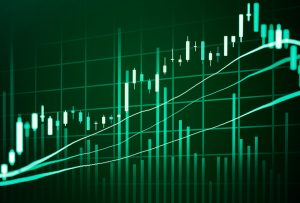 All traders fear that their broker might be scamming them in some way or another, and this type of behavior can be difficult to spot. Those with more experience might be familiar with forex advice regarding the warning signs. For those who are just starting out, however, it’s essential to learn these signals and how to spot them before going with the first broker who makes grand promises. Here is a look at five tips to recognize a scam before you become a victim.
All traders fear that their broker might be scamming them in some way or another, and this type of behavior can be difficult to spot. Those with more experience might be familiar with forex advice regarding the warning signs. For those who are just starting out, however, it’s essential to learn these signals and how to spot them before going with the first broker who makes grand promises. Here is a look at five tips to recognize a scam before you become a victim.
It’s easy to automatically assume everything being offered to you is a scam. There are often times when this is true, but there are also multitudes of reliable brokers who can be trusted. Nevertheless, a forex broker makes money off the failure of their clients whether it’s a scam or not. The more money a client loses, the more the broker gains. Because of this, certain features that brokers offer might be more for their benefit than your own.
Spreads have become a lot lower than they used to be, with brokers offering spreads as tight as 0.1 pips. However, these spreads are often only available to traders with higher account balances and deposits. Always check which account types can access the low spreads and compare it to what you would be able to afford. Trading on spreads like 3 pips for a EUR/USD is no longer the norm, so keep searching for lower spreads.
In addition to spreads, many brokers include trade commission fees. This commission price should not be considered alone. Instead, you should calculate what the risk would have been per trade and then compare it with the added commission you’d be losing to analyze the overall potential loss.
Brokers charge an overnight or holding fee for every position that is held open after the trading day has closed. These rates should be quite small and are based on the differences between the interest rates of each open currency pair in your forex trading account. The set fee is charged on each open trade you have and for each night it remains open. You should learn the fees each broker applies and lean toward the lower fee.
Each broker controls their prices autonomously and can make adjustments as they see fit. These prices are managed relatively fairly, but risks can arise from this great level of control. For example, a broker can see where their clients are placing their stop loss orders. If the market price of a currency were to spike, a broker has the power to increase their own prices above the stops and profit from the adjustment. Although this seldom happens, it remains a possibility. A genuine mistake will be easy to recognize as many brokers will repay clients for these losses in the event that they unintentionally adjust their prices during a spike.
Scammy brokers might reveal the problem of being unavailable during prime market conditions. This can be seen as trades being rejected or a loss of connection to the broker without reason. These types of glitches happen with most brokers every now and then, but if it occurs often during similar conditions, it is usually an indication that the broker is using dishonest methods of profiting.
These signs are only a few of the many that could indicate a scam. It’s essential to analyze your chosen broker for these warning signs before investing fully. If you already have a trusted broker and feel they might be scamming you in any of these ways, shop the broker market and find a better option. A good broker can make the difference between failure and success in the forex industry.